Soccer is an interesting sport on its own, but the instructions and executions carried out by players in different positions on the pitch can make a lot of difference in terms of the outcome.
Goals determine games a whole lot and as someone who has played the game before, I know what it means when you outfox your opposition and get a win over them.
However, the application of professionalism by full-backs could be less pleasing to watch but efficient in achieving results.
Let me share some knowledge about the roles and responsibilities of the left fullback.
What is the Left Back Position in Soccer: Understanding the Role
There are usually two fullbacks in soccer, and the job is simply to defend both flanks.
While the right back defends the right side of the penalty area, the left-back takes up the left side of the penalty area.
Way before the evolution of soccer, full-backs were saddled with the sole responsibility of defending and nothing more.
Back then, they were limited and mostly asked not to go into the attacking third to keep the opposition’s right-winger at bay.
Now, things have changed, and left-backs are playing key roles in games by venturing into the final third. They are also closer to the attacking outfield players and are now encouraged to join the attack more often than not.
Although the role remains primarily defensive, the players in this position require more than just their defensive abilities to excel.
They have to be strong, cover a lot of ground, and be able to make valuable decisions in crucial positions on the pitch.
Defensive Responsibilities of a Left Back
Left-backs have to be proactive because they are in a position to stop any form of danger before it enters their box. They usually employ either man-marking tactics or zonal-marking tactics.
The latter—man-marking—is a playbook from the past that involves following the dangerous attacker of the opposition on that wing.
For example, Jose Mourinho used Ashley Young against Mohamed Salah and Eden Hazard in the Premier League a few times while at Manchester United.
Meanwhile, zonal marking involves shutting down the passing lanes and having the attacker where he is uncomfortable.
Both styles are suitable to different types of games and wingers vary from game to game, which means, the left fullback has to be able to adapt in both situations quickly.
They also must make timely tackles to avoid being booked early in the game and play well against the opposition’s winger.
Attacking Responsibilities of a Left Back
First and foremost, a left-back is responsible for helping the defense and preventing the opposition from building an attack from that position.
In their defensive duty, the left-back does appropriate marking, tackling, interceptions, and winning duels.
On the other hand, they help to stretch the field in the offensive phase, allowing the attack to have as many as five players active.
Left backs provide the extra option in the final third, and that helps the side create overload on the left side.
To be able to make these contributions, they have to be agile, mobile, quick thinkers, and have stamina.
5 Best Leftbacks Right Now
We just observed the left-back position and the duties of a left fullback. With that in mind, it is time to look at the current best players in the position at the moment.
These five players are considered heads and shoulders above their colleagues at the moment because of their solid abilities in the position.
Their strength, stamina, technique, ball-playing, anticipation, and crossing ability have distinguished them from others.
You will briefly learn about their careers, what they are known for despite playing in this particular position, and how they have grown to become who they are at the moment.
These are five of the best LBs in soccer at the moment.
Alphonso Davies
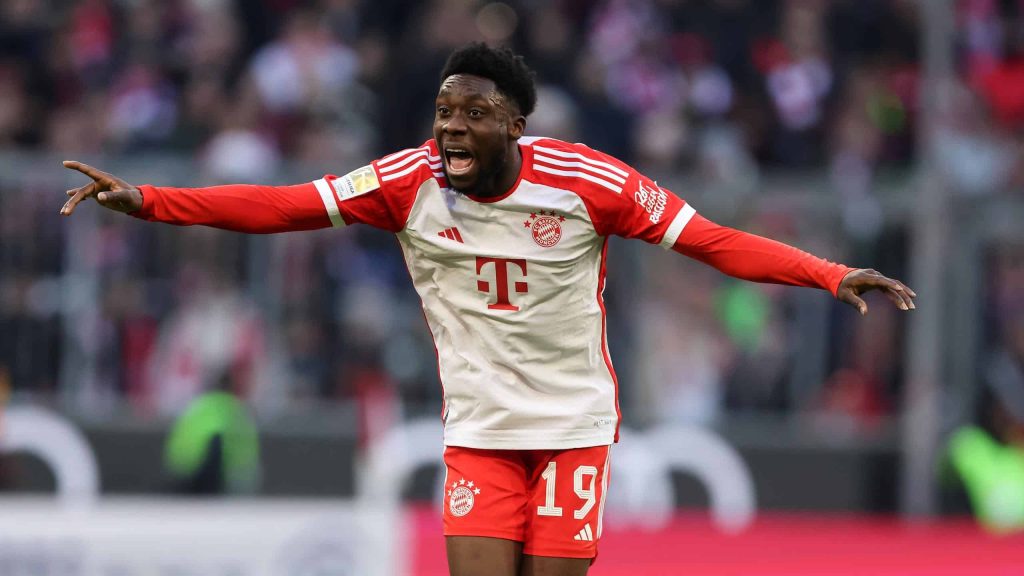
In this left-back position, Davies remains a force to reckon with. The Canadian’s greatest asset is his versatility.
His immense athleticism means he can be influential in both the first and final thirds and can cover a huge amount of ground regardless of his nominal position.
He is a sensational wide player who could slow down to execute a pass, turn, or shot after an intense moment—but, unlike others, he can do it without losing control.
Davies is also capable of making runs from deep territory. When advancing into space, he does so with confidence, picks out the right man in his side’s final third, and favors accurately playing possession across the penalty area.
It is not surprising that he is one of the most sought-after left-backs in world soccer at the moment.
Theo Hernandez
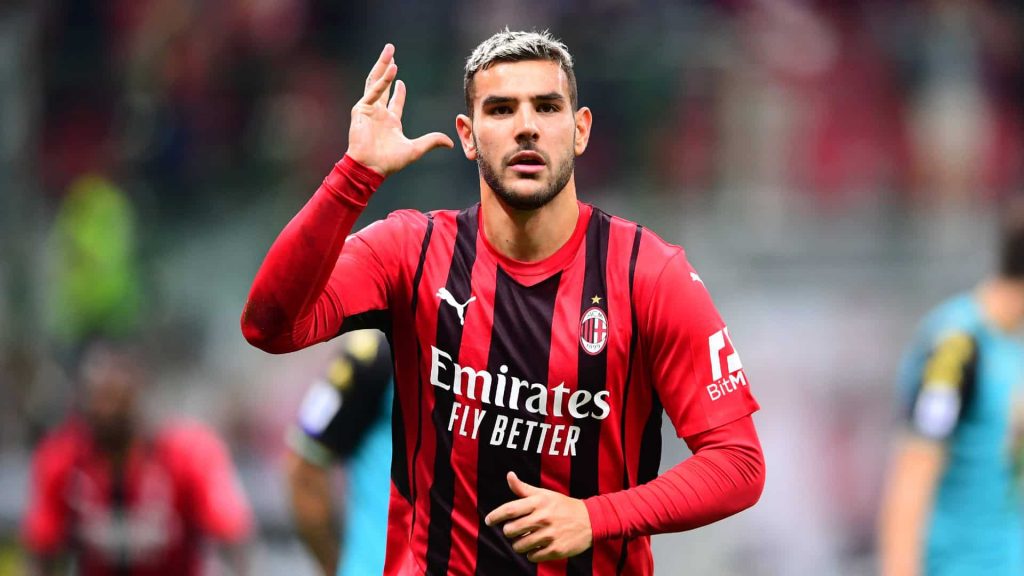
Theo is known more for his attacking qualities than his defensive capabilities. The youngest of the Hernández brothers is a soccer player blessed with immense pace, excellent dribbling ability, and the capability to get into great goalscoring positions.
Over the past few seasons, the Frenchman has established himself as one of the best players in this left-back position.
Since his move to Italy in 2019, Theo’s performances for AC Milan have not gone unnoticed, and it is probably a matter of time before he gets to move to another big club in Europe.
Andrew Robertson
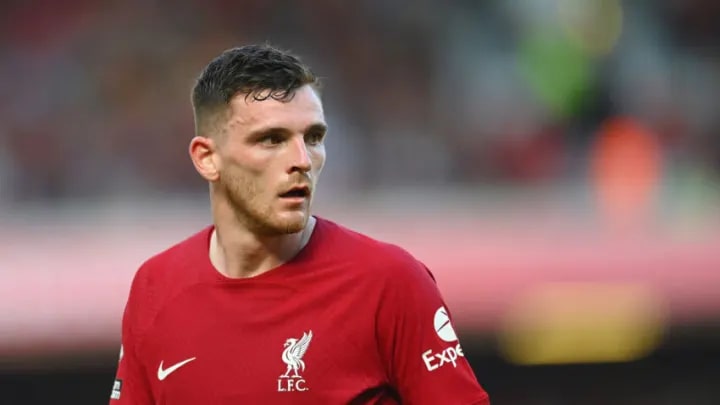
Robertson is one of the finest left-backs currently operating in world football because of his ability to excel in both defensive and attacking situations.
Robertson’s career got to another level after moving to Liverpool from relegation-bound Hull City. The Scotland international has gone ahead to become one of the greatest left-backs to grace the Premier League.
Robertson’s crossing ability, deliveries from set-pieces, holding onto the ball, and stamina make him stand out.
The 30-year-old currently holds the record for the most assists by a left-back in Premier League history and looks like he will extend it before the end of his career.
Oleksandr Zinchenko
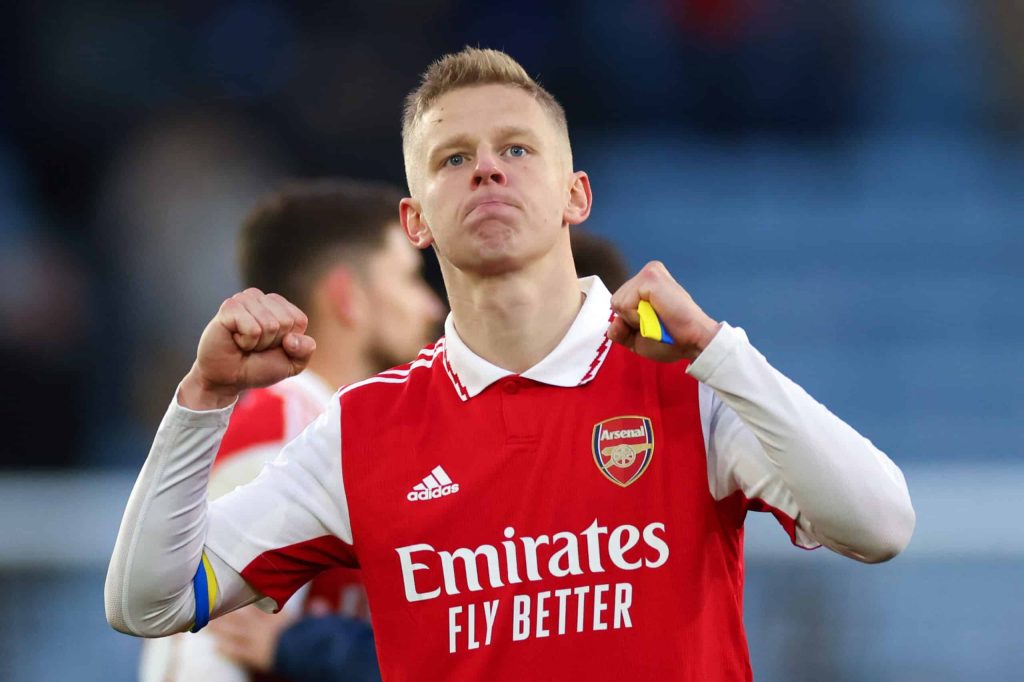
The Ukranian can be considered to be one of the modern-day left-backs and he has taken up different roles due to his versatility and football IQ.
When watching Zinchenko, one quality that quickly stands out is his ability to pass the ball. The quality and weight of his passes are always clean, firm, and accurate. Zinchenko is always patient with the selection of his passes too.
While others might be stronger defensively, Oleksandr Zinchenko’s passing ability makes him one of the best in this left-back role.
Apart from being incredibly press resistant, Zinchenko also boasts of an excellent ball-striking ability, which is evident in his attempted line-breaking passes as well as his ability to deliver pinpoint crosses into the box.
Nathan Ake
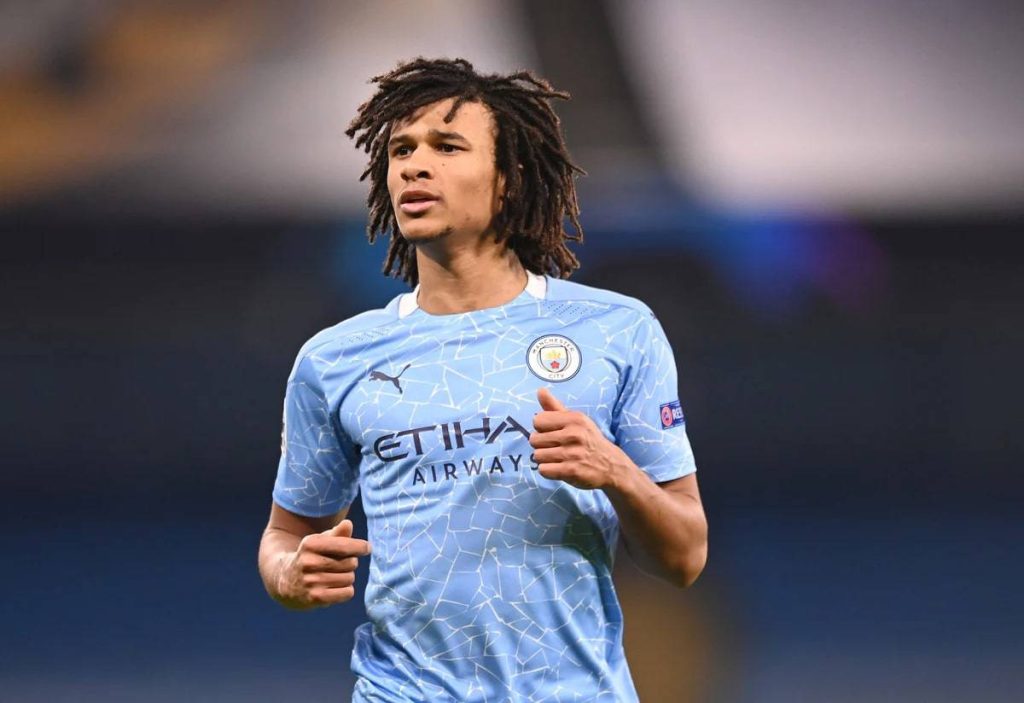
Nathan Ake, who is a center-back by trade, has evolved into one of the best in the left-back position.
The Dutchman’s ability to adapt has helped him settle in at Manchester City and has become an important asset to the team. He is also a cheat from set-pieces.
Ake’s decision-making and timing have always been his best qualities. He exhumes composure on the ball and completes successful passes with ease. He does not just do the safe options as he plays forward passes more often.
Another thing is Ake’s strong defensive work. He stays on his feet longer than most left-backs and with his combination of mature decision-making and athleticism, it is easier to take opposition attackers out of the game.
5 Best Left Backs of All Time
You have learned about the 5 best left backs that we have at the moment. Now, it is time to compare with those who have played the game in the past.
This will give an idea of what they represented back then and how they exerted influence on games.
These legendary left-backs shaped soccer in their way and they cannot be overlooked in the history of the sport.
Paolo Maldini, Roberto Carlos, Giacinto Facchetti, Marcelo, and Bixente Lizarazu are the players upcoming left-backs like yourself reading this piece can look up to.
One clear thing is that there is no player in this position without a known skill to them. So, I suggest you pay close attention to how they play to complete your education on the left-back position in soccer.
Paolo Maldini
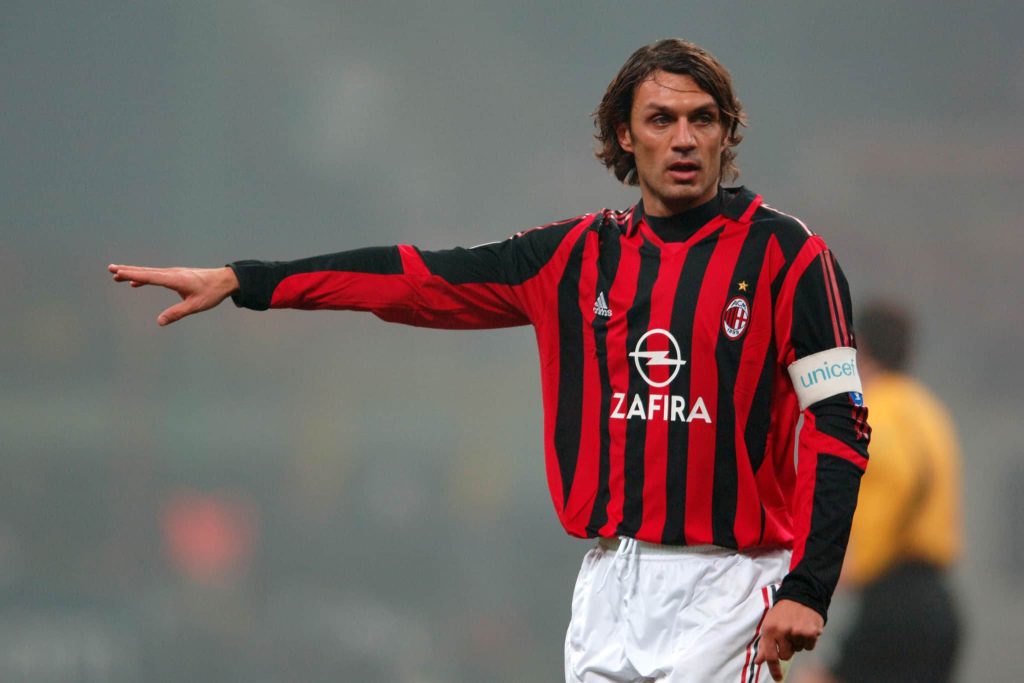
Maldini was quite versatile, as he could play as a left-back or a center-back.
Besides his leadership skills, Maldini was known for his outstanding defensive skills, ability to read the game, and precise tackling – probably one of the greatest tacklers of all time.
He had impressive aerial ability despite not being the tallest player on his team. Having said that, he was also an excellent passer of the ball, both short and long.
Maldini faced players like Ronaldo and Cristiano Ronaldo, and even in his late 30s he could still shut them down and come out on top. Maldini, as a left fullback, was a dominant force throughout his trophy-laden career.
Roberto Carlos
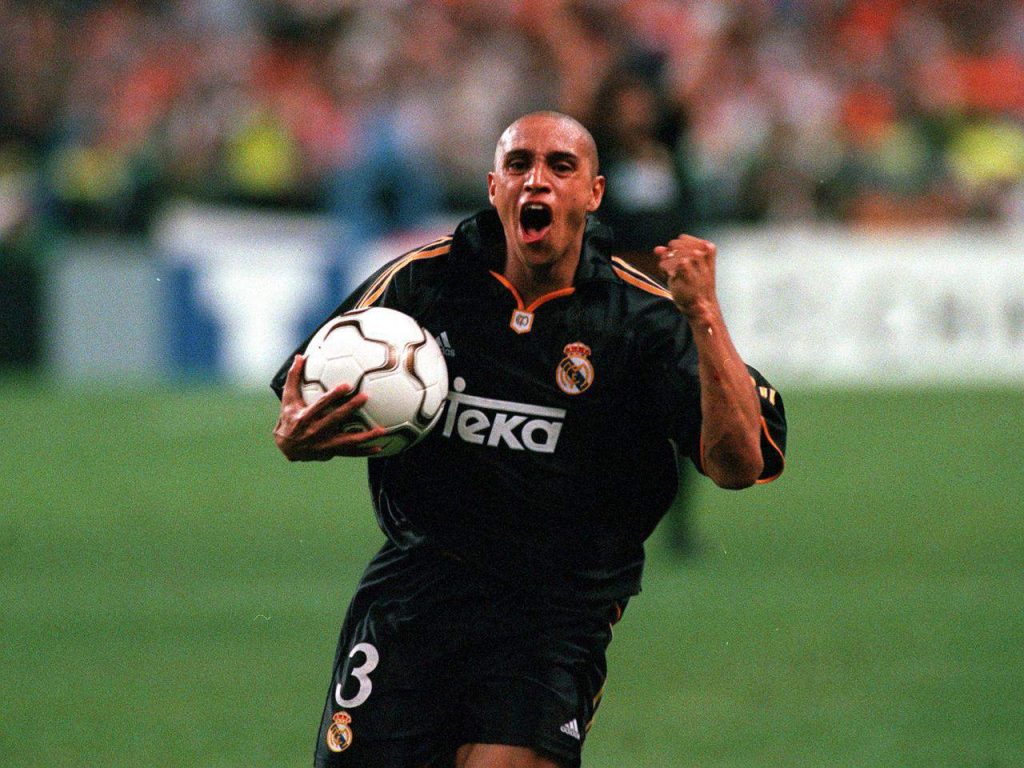
Roberto Carlos? Think power. He earned the name of El Hombre Bala (“The Bullet Man”) for a reason – his powerful swerving shots and free kicks from a distance.
Carlos was one of the foremost left backs whose offensive qualities supersede their defensive abilities. The Brazilian was a force to reckon with and a goal threat.
In his prime, he featured for two of the best attacking sides of all time, Real Madrid late 90s/early 2000s and the Brazil 2002 side.
Giacinto Facchetti
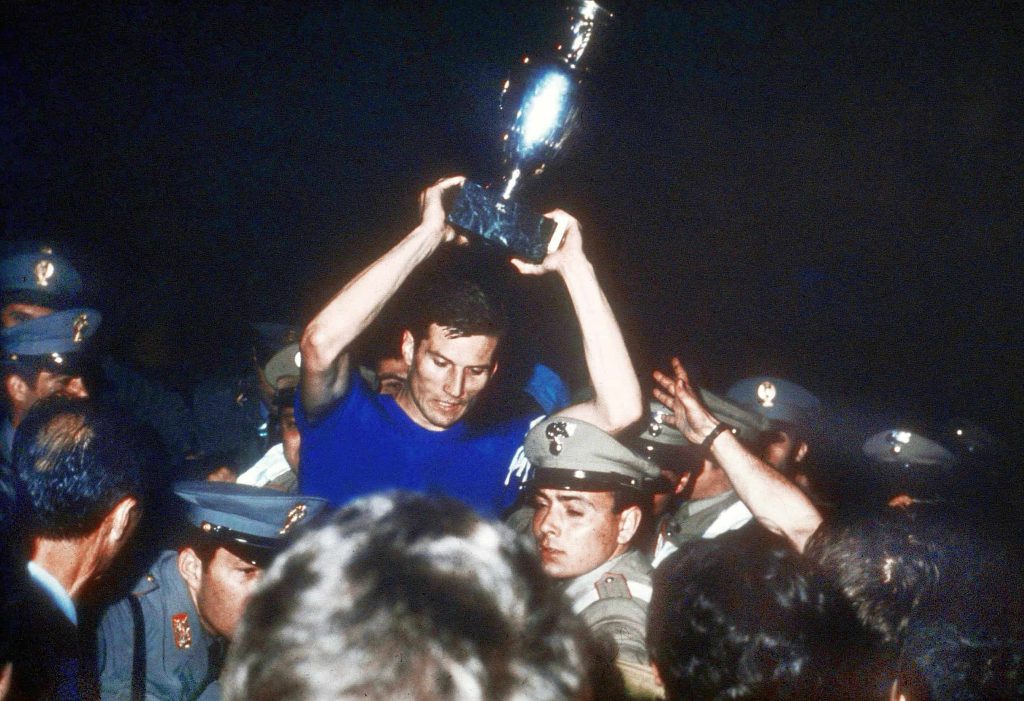
Giacinto Facchetti came way before the others on this list and was considered the grandest captain by the legendary Helenio Herrera.
Facchetti inspired a generation of Italian defenders; one of them was Paolo Maldini, who even spoke of Facchetti’s influence on his career.
He was a man who played the sport with impeccable spirit and morality. He scored 75 goals in over 600 games for a largely defensive Inter Milan side.
In his honor, the club retired his famous number 3 jersey and kept him on the payroll until he died in 2006.
Marcelo
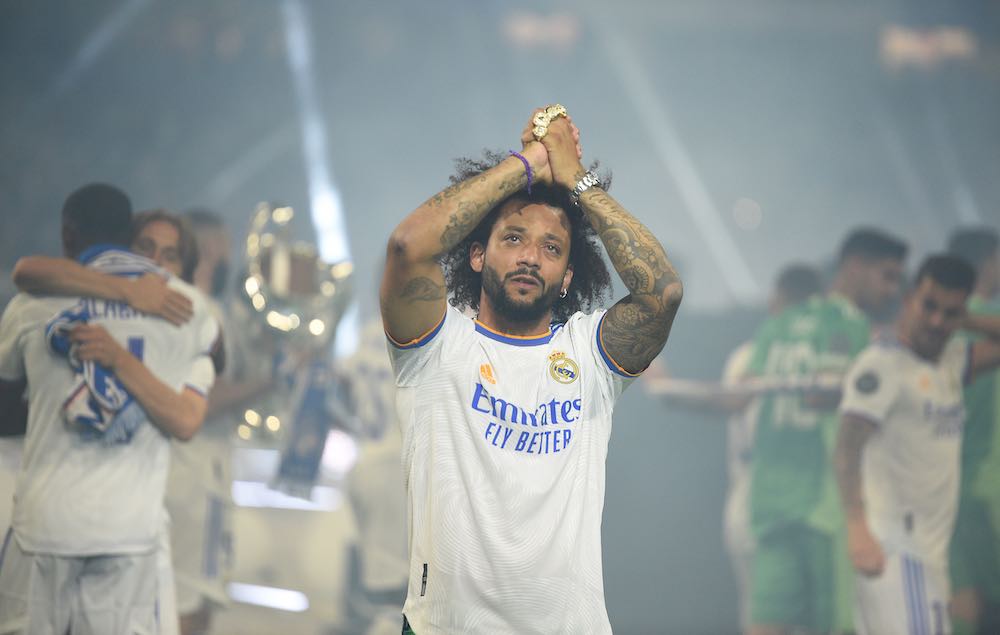
Marcelo was a bundle of skills, trickery, and pace during his prime days. The Brazilian legend, known for his offensive capabilities and technical qualities, is often regarded as one of the greatest left-backs of all time.
Marcelo’s prime years were with Real Madrid and is the club’s most decorated player, with 25 trophies won. His combination with Cristiano Ronaldo on the left helped Los Blancos achieve those achievements.
Marcelo was so great on that left wing that he even took up positions in the final third more often. In short, he was a proper modern-day left-back who cannot be forgotten in this century.
Bixente Lizarazu
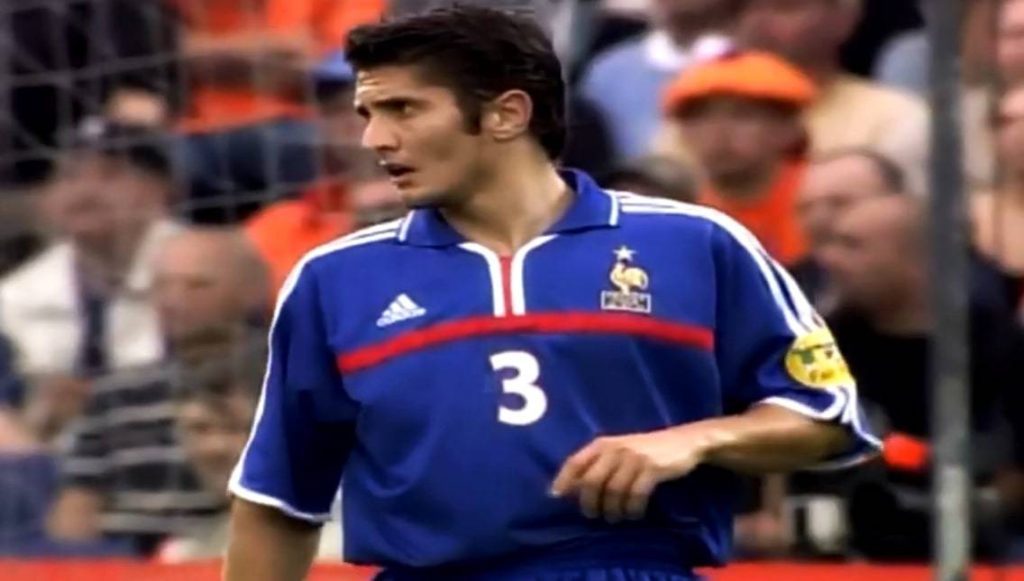
Liza, for short – despite his short height, made an impact in the left-back position for Bayern Munich and the French national team.
He was a left-back known for his speed, agility, and attacking prowess.
He was also strong defensively and had a powerful left foot, which made him a goal threat going forward. Liza was a blend of both qualities, and that made him relevant throughout his career.
He was an accomplished winner who won the UEFA Champions League, the World Cup, and the European championship.
FAQ’s
What is the difference between a left-back and a left-wing-back?
Both are variations of the full backs’ soccer position in a team. However, a left-back is a type of defender who is expected to defend the left side of the field and is responsible for marking the opposing team’s forwards.
Meanwhile, a left wing-back is a type of full-back who simply has more attacking responsibilities than the left-back.
What makes a good left-back?
As a left-back, you need speed and stamina. These are the two main physical attributes of a left back.
Left-backs need speed to cover every necessary ground that their role demands according to the coach’s tactics. The ability to put the right cross into the opposition box is also an important quality.
Final Thoughts
To a large extent, traditional left backs are slowly going into extinction, no thanks to the evolution of soccer.
Left-backs are now being trained to focus more on that attacking aspect of their game, while their defensive duty is being assigned to another defender. It is the direction the sport is going at the moment.
However, having a left-back who is comfortable on the ball, can bump forward, and possesses good passing and crossing abilities can make a lot of difference in games.

